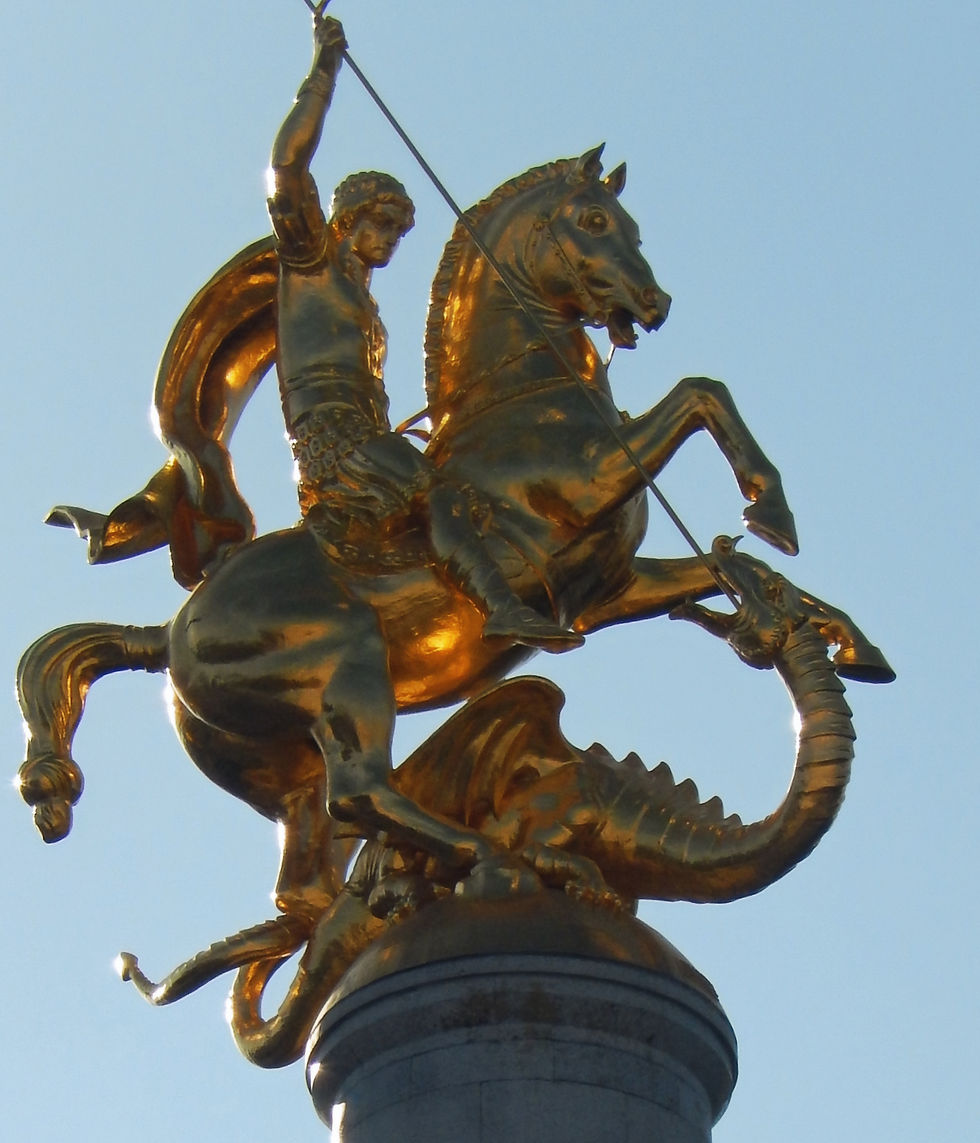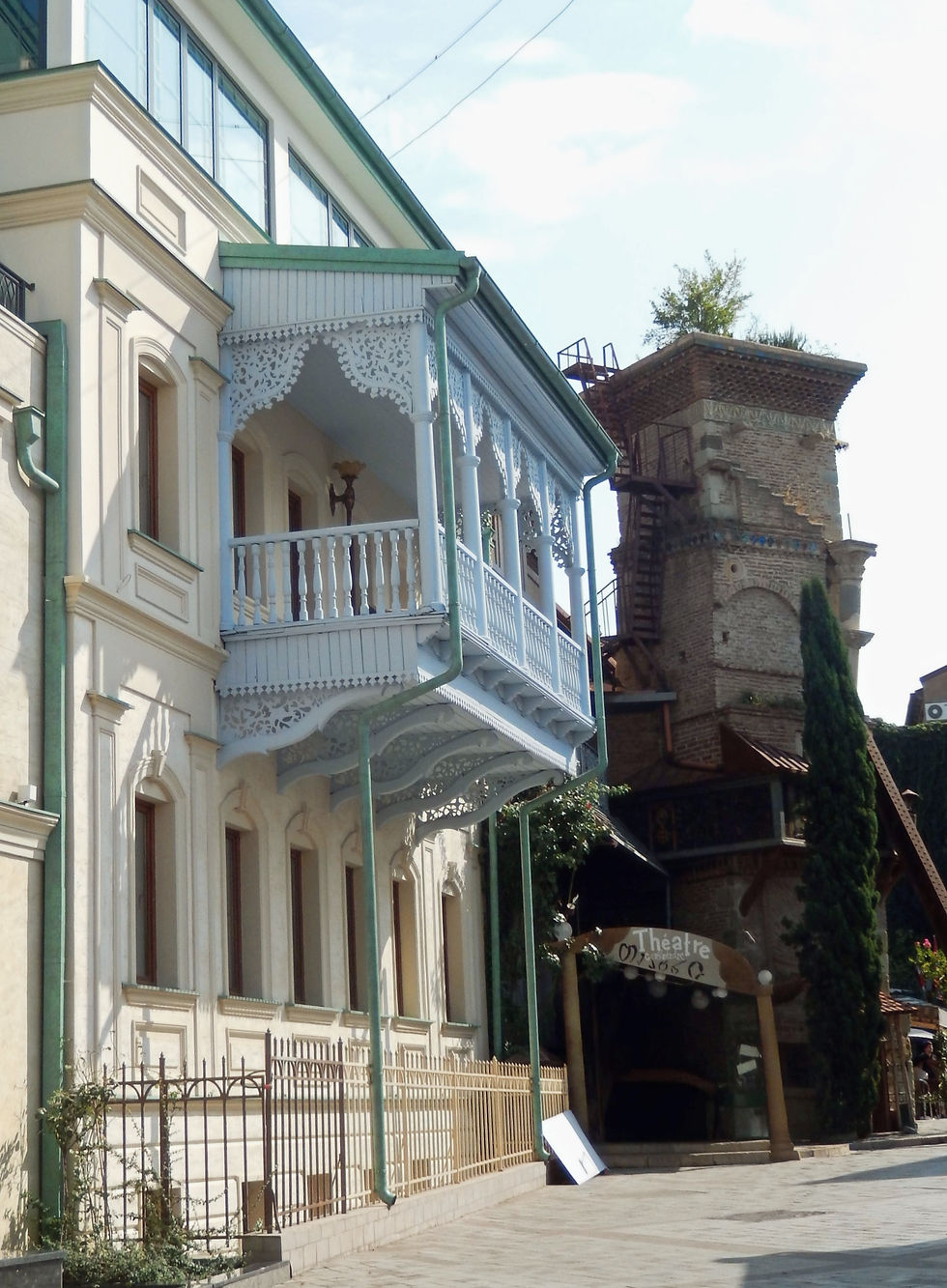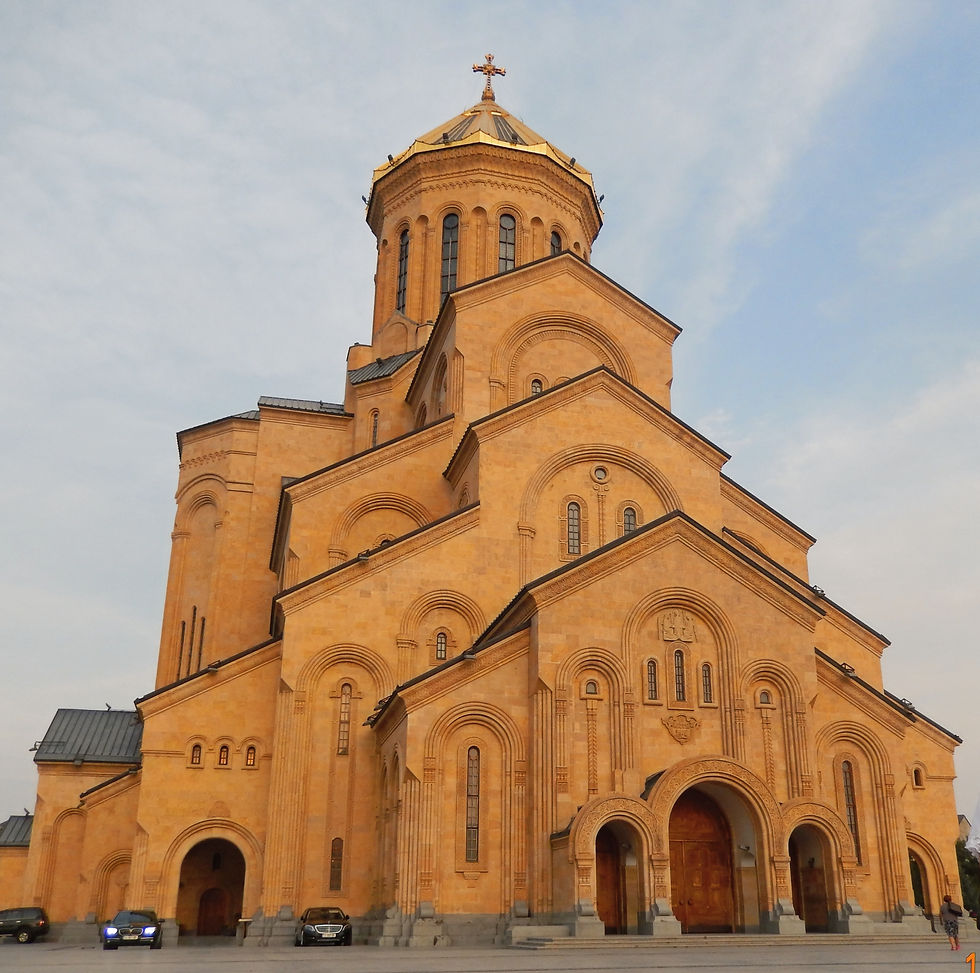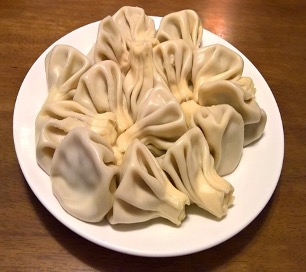Georgia - An ancient and enchanting country
- Admin

- Aug 19
- 7 min read
Following on from his previous article on Armenia, Will Alkass describes visiting Georgia on the further leg of that trip.

As you approach Georgia's capital Tbilisi, you can't fail but notice the gigantic statue of "Mother of Georgia" on top of the hill. She symbolises the Georgian national character: in her left hand she holds a bowl of wine to welcome those who come as friends, and in her right hand she holds a sword for those who come as foes. It’s up to you to decide where you stand!
History
Georgia reached its golden age as a kingdom during the 12th and 13th centuries under King David the Builder and his granddaughter Queen Tamar, at a time when Georgian territory extended from the Caspian Sea to the Black Sea. This period was characterised by a remarkable renaissance in literature, architecture and religion, well before its European counterparts. Following successive subsequent invasions by the Mongols, the Persians and the Ottomans, Georgia lost most of its territories and eventually signed a treaty with the Russian Empire but still remained subject

to hegemony by its neighbouring states. In 1922 it became one of the founding republics of the Soviet Union and during the second World War Georgian soldiers fought alongside the Russian army to repulse the invading Nazis who were trying to reach its oil fields. In April 1991 Georgia finally declared its independence after the collapse of the Soviet Union and it has since pursued a pro-western policy.
Religion
St Andrew the Apostle, brother of Saint Peter, is said to have preached early Christianity along the shores of the Black Sea evangelising the Georgians. Christianity was declared the official religion

of Georgia in 327 thanks to St Nino who by her divine efforts managed to convert Queen Nano following her miraculous recovery from illness and eventually also her husband, the pagan King Mirian III of Iberia who had had his vision restored after praying to St Nino's God.
St Nino is now revered throughout Georgia and her distinctive Grapevine Cross can be found in many places as well as being sold as a souvenir to visitors.

There are numerous churches and monasteries in Georgia, the most important of which is Svetitskhoveli Cathedral (restored in the 11th century) and which is regarded as the "Holy City" of the Georgian Orthodox Church, having been the place of royal burial and coronation until the end of the kingdom in the 19th century. The cathedral is located in the city of Mtskheta which was founded in the 5th century BC as the capital of Georgia before it was moved to Tbilisi.
Below is a picture of Jvari Monastery which dates from the 6th century and is perched on top of a hill with the Cathedral complex below. To its right is a picture of Samtavro monastery which dates from the 11th century.
It is believed the name Georgia was given to the country when it was a part of the Persian Empire because of the people's devotion to St George who was also made the patron saint of England

by King Edward III in 1350. The similarity between the flag of England and the flag of Georgia is quite obvious, both featuring the red cross of Saint George.
Three hundred and sixty five Orthodox churches in Georgia are named after St George in correspondence with the number of days in a year. His feast day is celebrated In Georgia on 23rd November which is a public holiday marked with processions, celebrations and prayers. In other churches around the world the feast day is celebrated on 23rd April, the day of his martyrdom.
So who was Saint George the slayer of the Dragon?

There are several versions of the legend of Saint George. According to the Greek version George was born to noble Christian parents in Cappadocia and then became a Roman soldier in the city of Diospolis which is nowadays in Israel and called Lod. Because of his Christian faith he was arrested and tortured and eventually paraded and beheaded under orders from the emperor Diocletian and his body was buried there. According to this legend, a witness convinced Empress Alexandra of Rome to also become a Christian so she joined George in martyrdom.
Although George was martyred in 303 AD his legend only became widely know in Europe in the
11th century. This later version tells of a fierce dragon causing panic at the city of Silene in Libya. To prevent the dragon from devastating the city, the helpless people gave two sheep each day to the dragon to satisfy his voracious appetite but when the sheep were not enough they were forced to sacrifice humans, elected by the city's own people. Eventually, the king's daughter was chosen to be offered and no one was willing to take her place. While on her way to be devoured by the beast dressed in a bridal gown, George saved her by slaying the dragon with a lance. The king was so grateful that he offered him treasure as a reward for saving his daughter's life but George refused and insisted it should be given to the poor. The people of the city were so amazed at what they had witnessed that they all became Christians and were baptized.
Architecture

The most striking features of Tblisi are the monasteries which surround the city in all directions, the Kura river which traverses the city, and the architecture of the city itself which comprises an eclectic mix of medieval, Neo-Classical, Art Nouveau, Stalinist and modern. During our stay in the old city it was easy to get lost in the maze of old alleyways; however, that gave us the opportunity to discover its eclectic mix of old and dilapidated houses with crumbling facades, interspersed with beautiful wood-panelled balconies. Many of these houses are surrounded by intricate and ornate woodwork or ironwork, some of which is enclosed with wooden or glass panels to form a "conservatory" type structure, doubtless to provide an extra room protected from the elements.
Tbilisi also boasts some modern and fantastic buildings like the Peace Bridge which connects old Tbilisi with the new district and which is a marvel of engineering and lighting technology.


Sameba Cathedral which was consecrated in 1996 deserves a special mention. The interior of the Cathedral is even more imposing than the exterior and we were lucky enough when visiting, to witness the rare event of the 'Patriarch of Whole Georgia' conducting a special mass. We wish that we had had more time to spend to absorb the beauty and variety of the rich architectural heritage of Tbilisi and other cities.
Georgia is well known in the West as the birthplace of Joseph Stalin. You find his State House Museum an hour by car from Tbilisi in the city of Gori, which was his birth place. Apparently, till this day many people still regard him as a national hero.
Archaeology
One or two photos cannot do justice to the magnificence of Uplistsikhe, one of the ancient urban settlements of Georgia. Situated on the bank of Mtkvari River, it contains various structures dating from the Early Iron Age to the Late Middle Ages. It is notable for its unique combination of various styles of rock-cut caves similar to those from Anatolia and Iran, as well as the co-existence of pagan and Christian architecture. The photos below show (left to right): Pigeons Holes for storing wines and drugs, Grand Halls carved into the rock face, the 9th century basilica with thick walls and three naves.
You can explore Uplistsikhe on a guided tour, or you can get the bus and once there make use of the audio guides
Local food
There are so many traditional Georgian dishes that it's difficult to list them all here. Below are photos of some dishes which we found very interesting:
Khachapuri is a fried egg on a bed of fancy pastry, Khinkhali are boiled dumplings filled with spiced meat or vegetables.
Churchkhela are candle-shaped candies the main ingredients of which are grape must, nuts and flour. Walnuts, almonds or hazelnuts are threaded onto strings which are then dipped repeatedly in thickened syrup of grapefruit must or other fruit juices to form a "sausage-shaped" bumpy candle with tapered ends. There is an amazing variety of colours and flavours, as you can see in the photo on the right above.
Wine
Georgia has an ancient history of viticulture and wine making and is regarded as the cradle of wine making, thanks to the several hundred different varieties of grapes grown coupled with the old-style methods of wine making. It was sometimes hard to choose between the wines on offer, especially when their names were unfamiliar to us so we had to be guided by our hosts, but were never disappointed with the choice of wine.
In Conclusion
To sum up, one can spend a very enjoyable time in Georgia as it has a lot to offer to suit all tastes. On a short stay, you can only see and do a limited selection of what is there. Tbilisi gets a bit busy and hot during the holiday season but you can take a trip to the mountains or to one of the Black Sea resorts. You can even treat yourself to an unforgettable experience in the Turkish Bath (Hammam) in the centre of Tbilisi.

It is only twenty five years since Georgia gained its independence from the Soviet Union and Russia (with whom there have recently been some disputes), and even though there is still a lot of work to be done to improve infrastructure and public services it is apparent that the country and the people have come a long way towards realising their dreams and aspirations for a free, modern and progressive state.



















